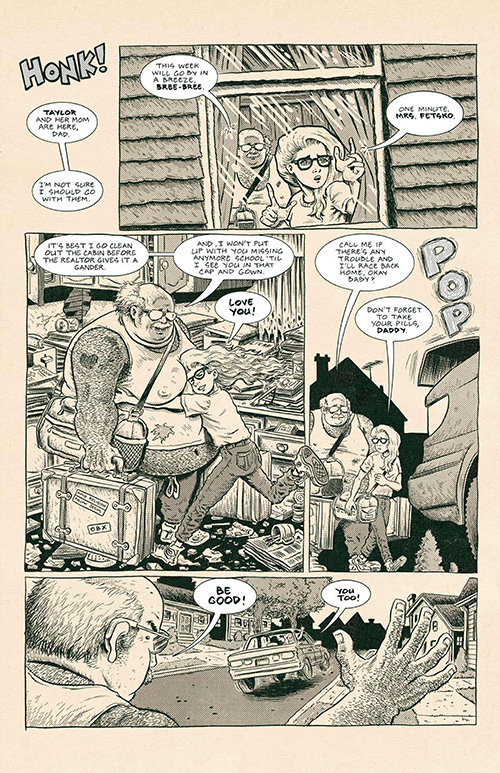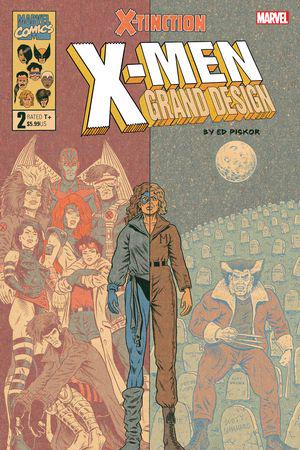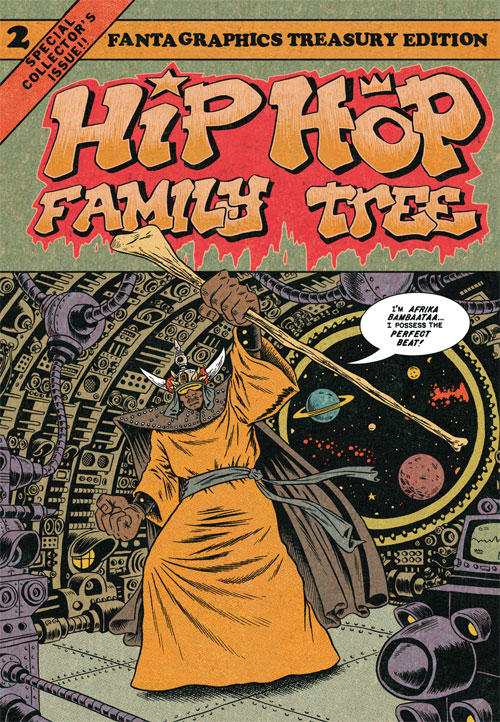“`html
Effective Ways to Explore Ed Piskor Comics in 2025


Understanding Ed Piskor’s Unique Style
Ed Piskor is a renowned **cartoonist** known for his innovative contributions to the world of **comics**. His work often features a distinctive **art style** characterized by a blend of historical context and personal narrative, particularly evident in his acclaimed series, “Hip Hop Family Tree”. This graphic novel series not only celebrates hip hop culture but also provides an insightful look into its evolution through **sequential art**. Ed Piskor’s ability to intertwine **storytelling techniques** with compelling visuals results in a rich **visual narrative** that captivates audiences and promotes engagement with the **comic book industry**.
Piskor’s Storytelling Techniques
One of the key aspects of Ed Piskor’s comics is his approach to **storytelling in comics**. He excels at using **character development** and **narrative structures** to create engaging plots. For instance, “Hip Hop Family Tree” employs a chronological narrative that not only highlights major figures in hip hop history but also interlaces personal anecdotes and interviews with artists, enriching the overall context of the story. Piskor’s use of humor and **social commentary** also resonates with readers, inviting them to reflect on cultural issues while enjoying the **entertaining content** of his works.
Exploring Artistic Influences
Piskor’s art is deeply influenced by various cultural elements, including the evolution of **comic book history** and **underground comics**. By studying **classic comics** and understanding the roots of modern **graphic storytelling**, Piskor has shaped his unique visual perspective. The visual humor and **symbolism** present in his works serve as a bridge between traditional comic art and contemporary themes. This fusion allows readers to appreciate the depth of meaning behind Piskor’s illustrations, while also examining the **artistic techniques** that shape the **comic strip** layout.
The Intersection of History and Art
Through works like “Hip Hop Family Tree”, Ed Piskor explores not just the surface of hip hop culture but its historical roots and influences. This exploration is pivotal for educating readers about the diverse influences that shape **comic book cultures**. By incorporating real historical events and characters into the fabric of **illustrated stories**, Piskor effectively utilizes **narrative pacing** to enhance engagement while providing educational value. The historical context embedded within Piskor’s storytelling creates opportunities for discussions regarding the impact of comics on cultural education and the importance of preserving **comic book traditions**.
Collecting Ed Piskor’s Creations
As a reader and fan of Ed Piskor, understanding how to effectively access and appreciate his works is crucial. Collecting his comic books, such as **graphic novels** like “Hip Hop Family Tree” and his self-published **zines**, can be an enriching experience. His publications often highlight not just his art but the vibrant community surrounding **independent comics**. Exploring different reading formats—whether through print or **digital comics**—adds another layer to the experience while making his works more accessible to a wider audience.
Comic Book Collections and Accessibility
When looking to expand your collection, consider platforms that specialize in **self-published comics** and **graphic memoirs**. Sites dedicated to **comic book reviews** offer insights into Piskor’s works, helping fans discover new titles and publications. Engaging with **comic book communities** online, such as forums and social media groups, can also lead to discovering collectors who share similar interests in Piskor’s **comic book series**. This networking often produces fertile ground for discussions about the connections between **visual literacy** and fan culture, advancing your understanding of comic art.
Participating in Comic Festivals
Attending comic conventions and **comics festivals** is another effective way to delve deeper into the world of Ed Piskor’s comics. These events often feature panels and discussions involving **professional comic artists**, including creators who may have worked with or around Piskor. By participating, you can gain insights into his **creative process** and exchange ideas with fellow fans. Remember, networking at such events can also lead to exciting opportunities to purchase exclusive **comic book collections**, participate in workshops, and engage with creators first-hand.
Exploring Themes of Identity and Culture
Piskor’s works provide a rich landscape for discussions about **identity through comics**. His treatment of **thematic elements** related to hip hop culture allows readers to engage with their own identities within this framework. By examining elements such as **visual humor**, **character arcs**, and the influence of various subcultures in his comics, fans can enrich their understanding of how comics can transcend mere storytelling and explore deeper **cultural representations**. Encouraging discussions around these topics among peers can illuminate many aspects of storytelling in the graphic novels that Piskor masterfully crafts.
Innovative Storytelling in Contemporary Comics
In today’s comic landscape, Ed Piskor stands out as a pioneer of innovative **graphic novel trends**. His works often challenge conventional **comic book formats** and encourage independent creators to explore alternative storytelling methods. By blending traditional artistic influences with modern narratives, Piskor’s comics showcase the boundless potential of **sequential art techniques** in contemporary storytelling.
Evolution of Independent Publishing
The rise of **independent publishers** has significantly impacted the distribution and form of comics today. Piskor, as an advocate for **independent comics**, emphasizes the importance of self-publishing and creator ownership as essential aspects of modern comic creation. With tools such as digital printing and online platforms for sharing **webcomics**, artists are more equipped than ever to reach audiences and distribute their work directly. This shift has made it possible for diverse voices in the comic book community to be heard, which is crucial for the continued evolution of **comic book storytelling**.
Cultural Impact Through Comics
The power of comics lies in their ability to convey messages that resonate culturally. Piskor’s narratives often include **social commentary** that challenges societal norms and instigates thought-provoking conversations around pressing issues. This cultural relevance enhances the impact of comics in our modern world, demonstrating their capacity as a storytelling medium that bridges gaps between generations and cultures. The exploration of contemporary themes in Ed Piskor’s comics also represents a significant moment in recognizing **comics as literature**, affirming their place in the broader narrative of cultural discourse.
Learning and Workshops on Graphic Storytelling
For those looking to delve deeper into the art of comic creation, participating in **comics workshops** taught by experienced creators can be invaluable. These programs often encourage exploration of **narrative techniques**, character development, and conceptual art, paralleling the skills needed to appreciate works like Piskor’s. Through hands-on experiences, aspiring artists can cultivate their **graphic storytelling** and learn how to effectively communicate their unique perspectives through comics.
Key Takeaways
- Ed Piskor’s work showcases unique **storytelling techniques** merging history and culture.
- Collecting his comics involves engaging with various platforms for wider access.
- Comic festivals offer lively interactions with fans and creators, enriching the experience.
- Emphasis on themes of identity and cultural representation deepens understanding of comics.
- The rise of **independent publishing** is revolutionizing the comic book industry.
FAQ
1. What are Ed Piskor’s most notable works?
Ed Piskor is best known for his graphic novel series, “Hip Hop Family Tree”, which chronicles the history of hip hop through dynamic **sequential art**. Additionally, his other works include graphic memoirs and **underground comics** that highlight various aspects of contemporary culture.
2. How can I start collecting Ed Piskor comics?
Begin by exploring online marketplaces specializing in **self-published comics** or comic book stores that focus on **alternative comics**. Engage with others in **comic book fandom** communities to find recommendations and potential sales for collections featuring Piskor’s work.
3. What themes are prevalent in Ed Piskor’s comics?
Piskor’s works often delve into themes of identity, cultural representation, and the evolution of hip hop. His comics utilize **visual storytelling** to offer deep social commentary, engaging readers with significant cultural narratives.
4. How do comic conventions enhance the experience of exploring comics?
Comic conventions foster community and offer opportunities for engagement with creators, like Ed Piskor. They provide platforms for panels, workshops, and interaction with fellow comic enthusiasts, enriching the understanding of the medium and its artistry.
5. How has technology affected comic book publishing?
The rise of digital comics and online platforms has democratized comic publishing, enabling **independent publishers** and self-publishing artists to reach wider audiences without the limitations of traditional publishing routes.
6. What is the significance of independent publishing in Ed Piskor’s works?
Independent publishing allows creators like Piskor to maintain control over their artistic vision, enabling them to explore unconventional themes and formats. This has led to a vibrant landscape for **graphic novels** that push cultural and artistic boundaries.
7. How can I study storytelling techniques in comics effectively?
Engaging in workshops, reading literature on comic design, and analyzing various comic book formats will deepen your understanding of **storytelling techniques**. Observing Ed Piskor’s works alongside classic and contemporary examples can illustrate a wide range of narrative styles.
“`
